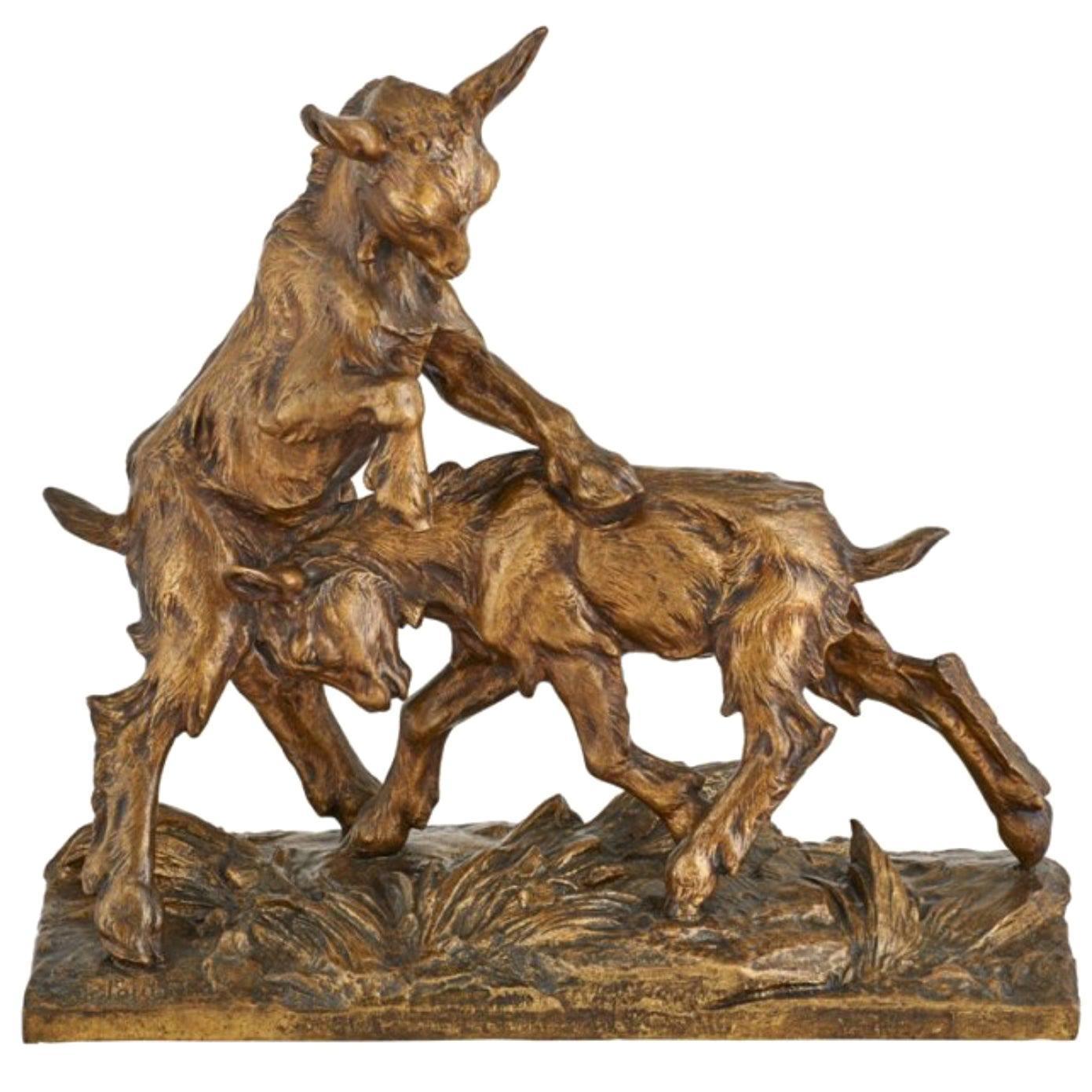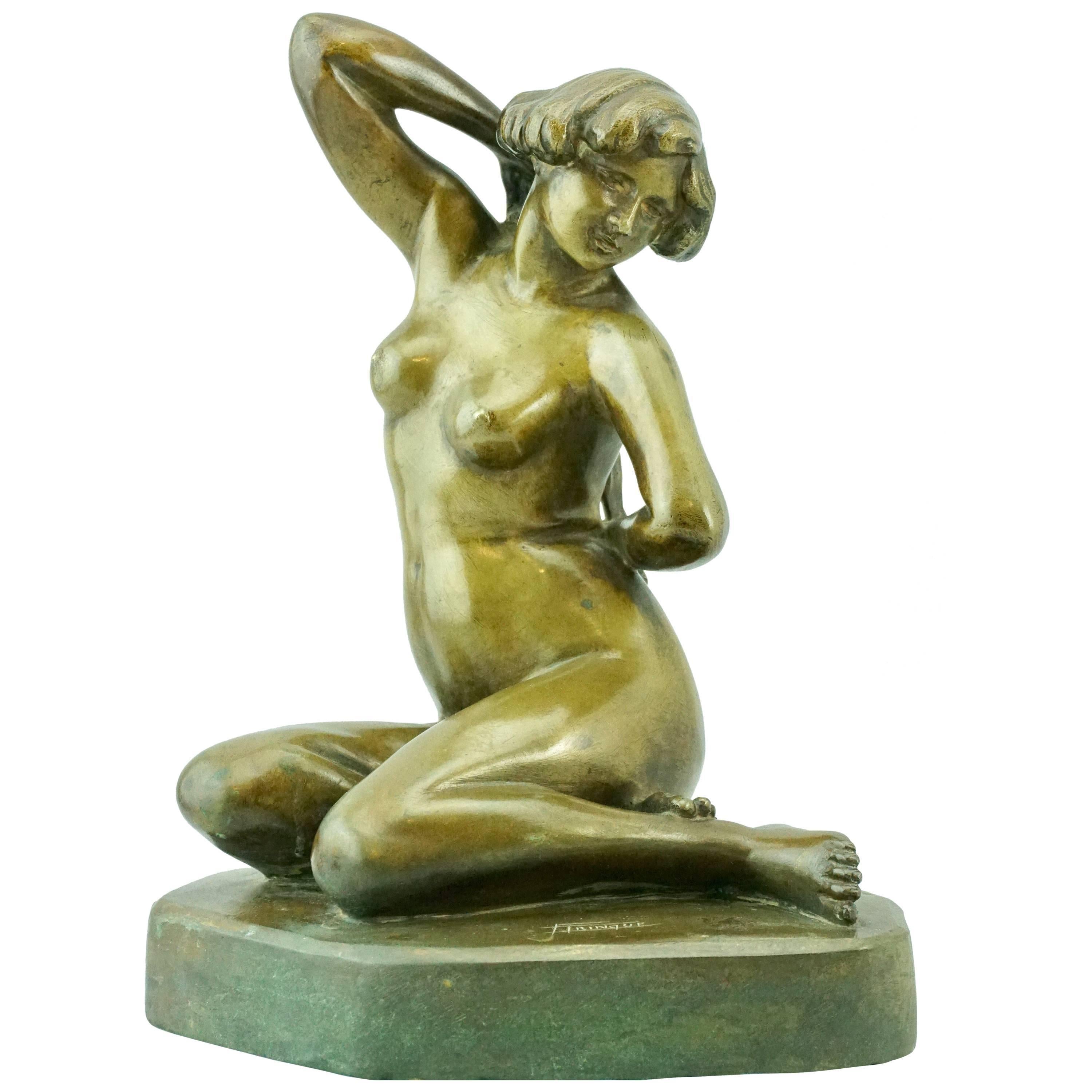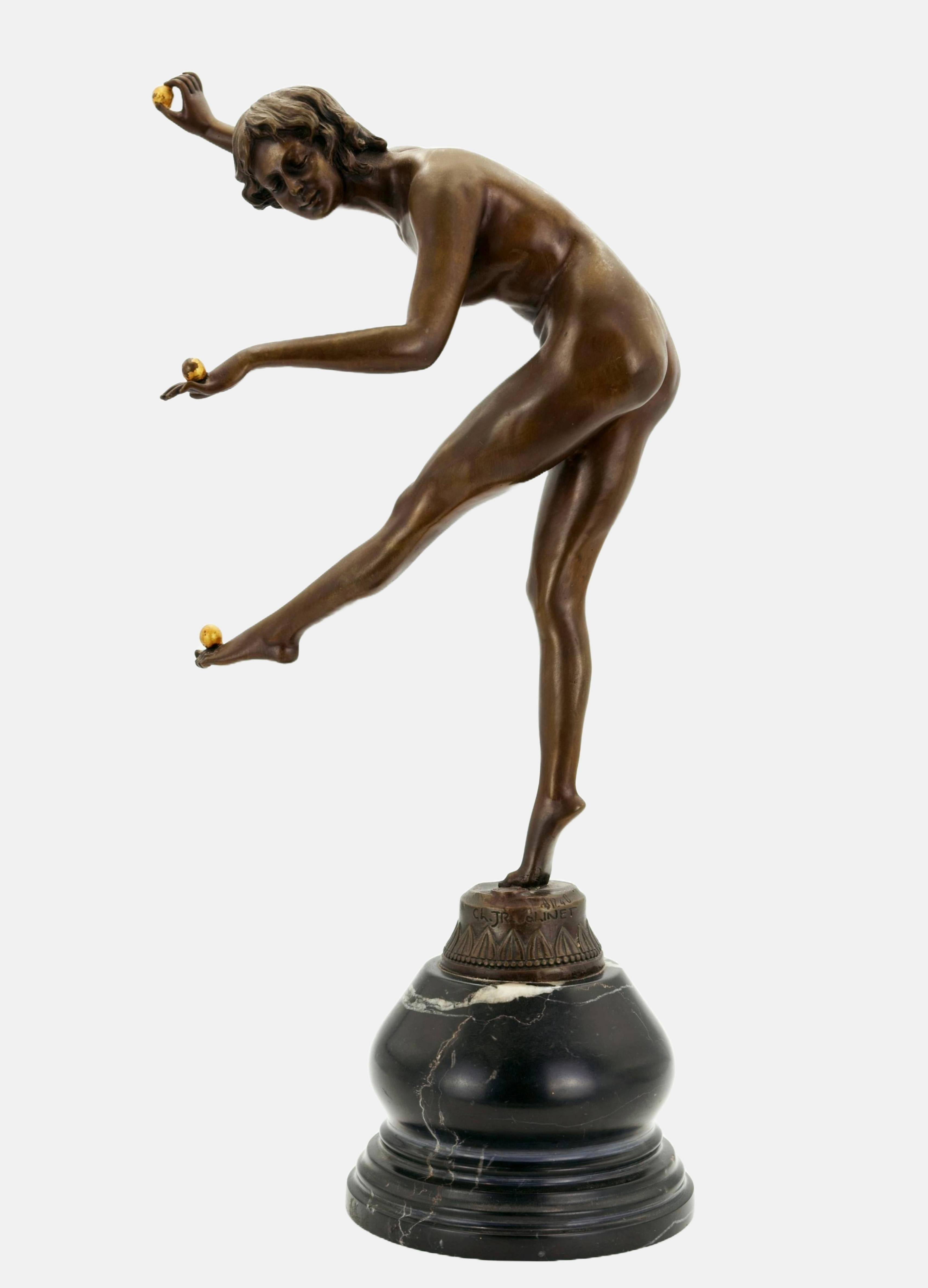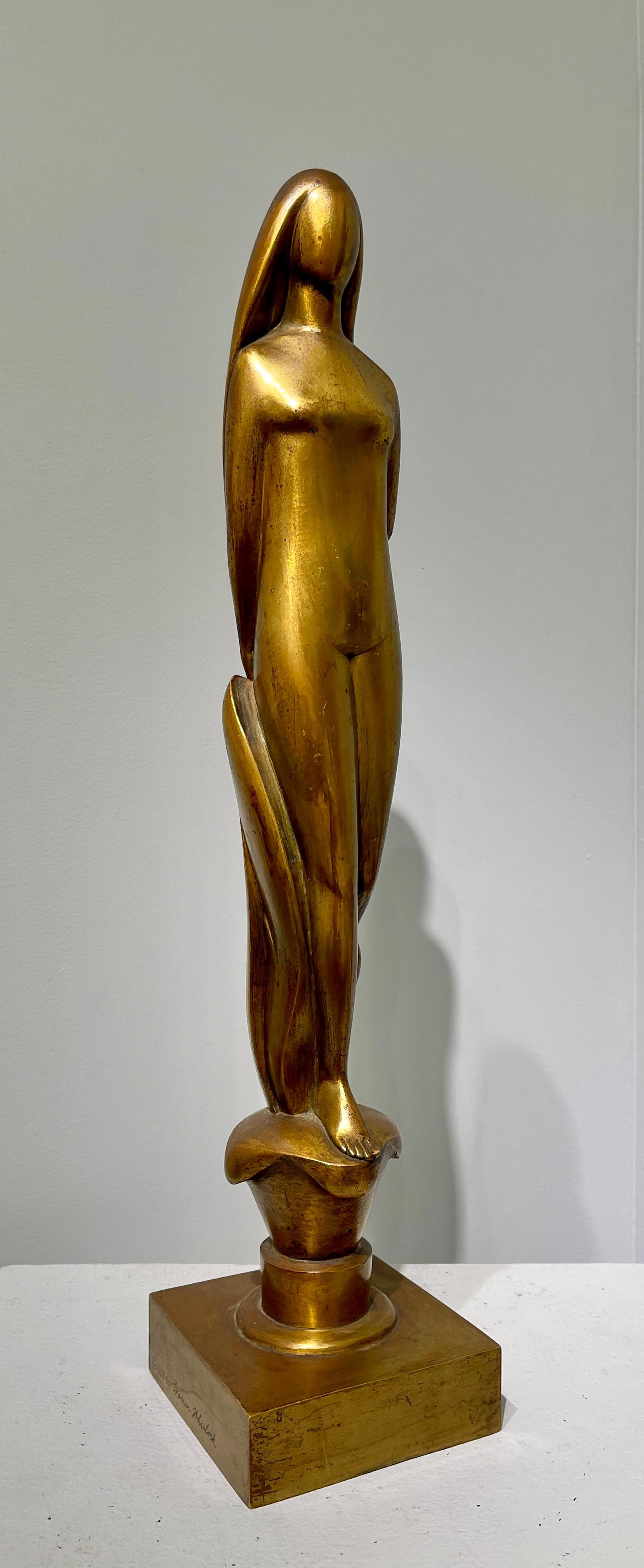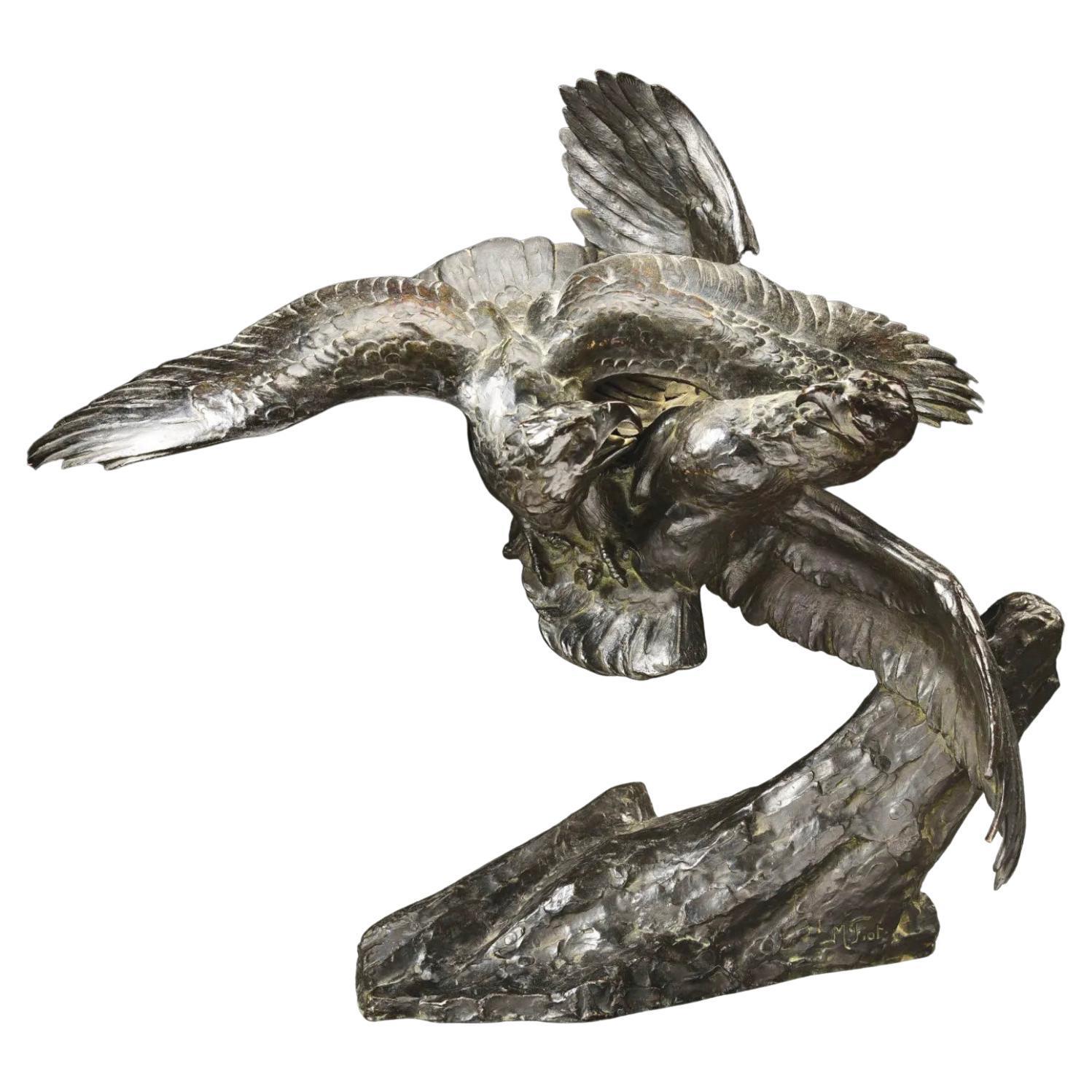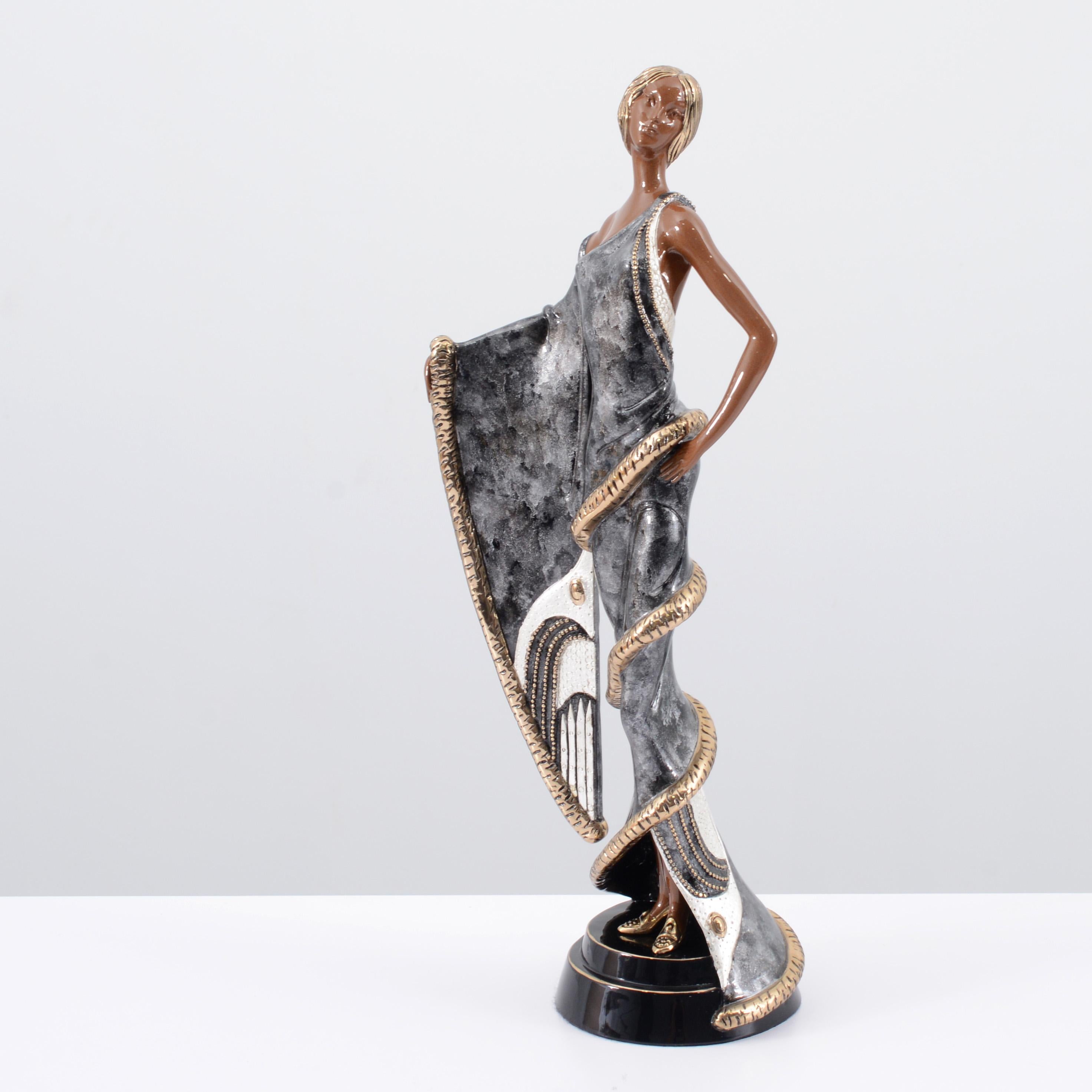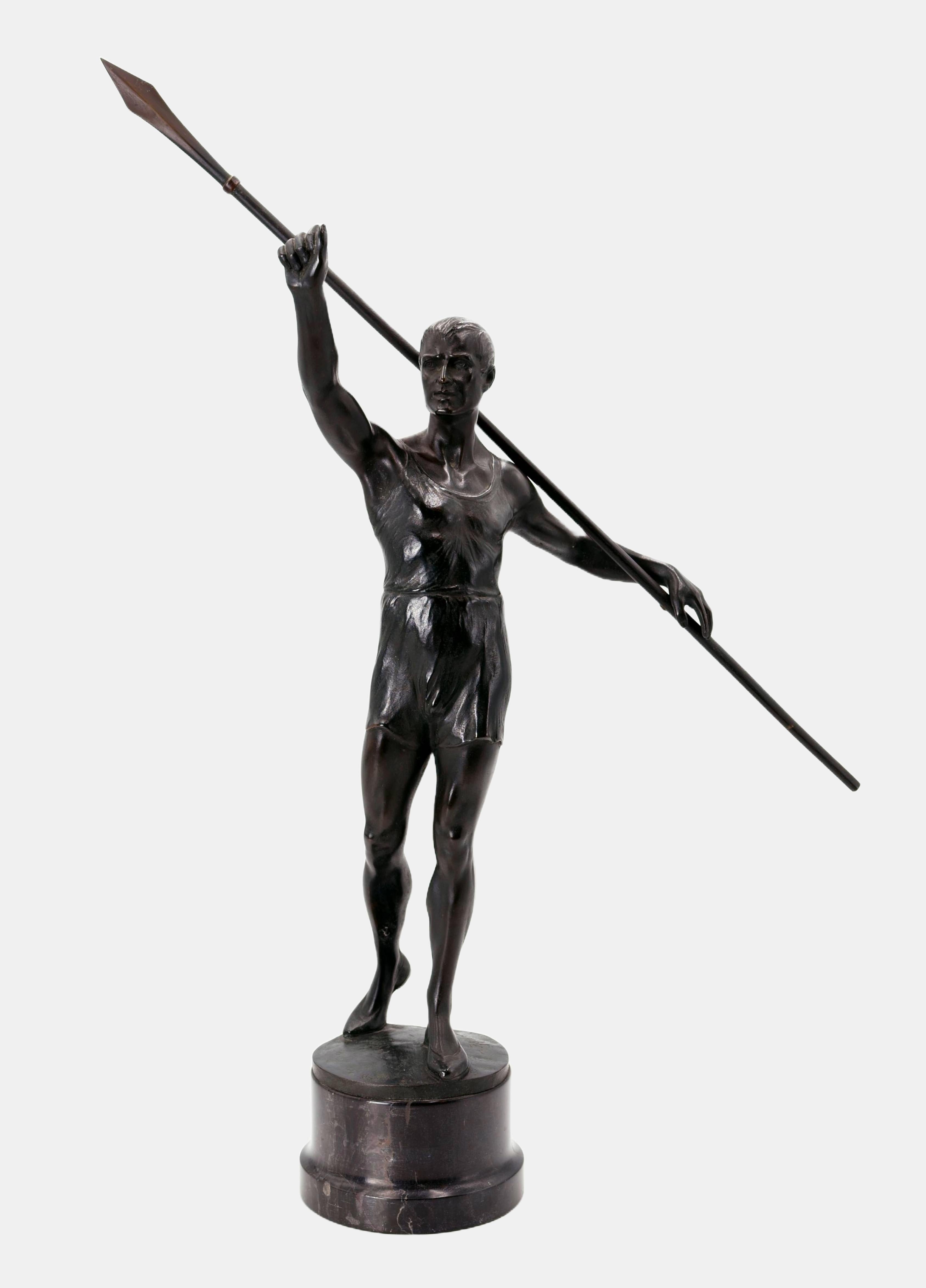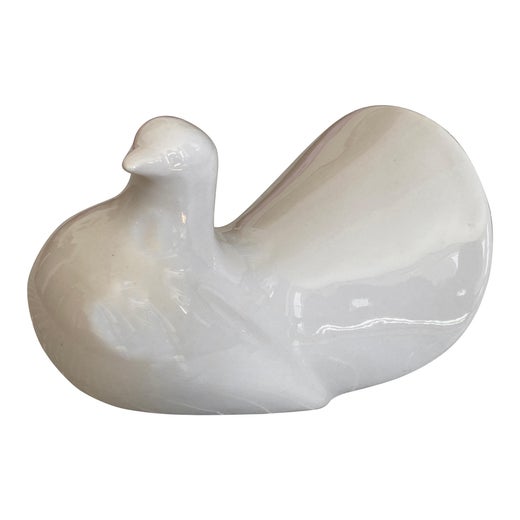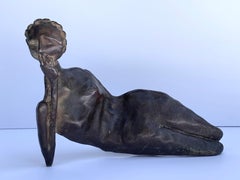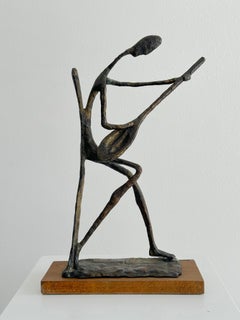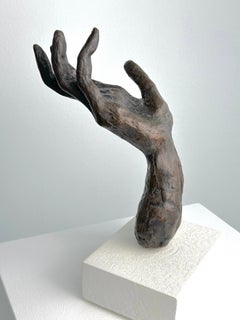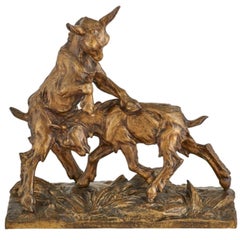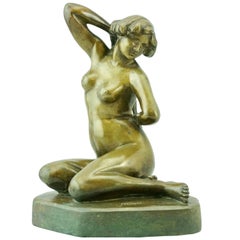Horse
View Similar Items
Waylande GregoryHorse1936
1936
About the Item
Waylande Gregory
Waylande Desantis Gregory was born in Baxter Springs, Kansas, on June 13, 1905. He was a sculptor, a designer and a craftsman. He studied at Pittsburg State Teachers College, 1922 and enrolled in the Kansas City Art Institute. Within a few months, Gregory accepted a position with the McCartney Ornamental Plastering Company. Though still very young, Gregory was soon assigned his first major project of the design and casting of architectural ornaments for Strong Hall, the administration building at the University of Kansas, Lawrence. Gregory next found his way to the Chicago Art Institute, where he came under the influence of historian-sculptor Loredo Taft and began to work in marble, bronze and ceramics. Ceramics became Gregory’s primary medium. He apprenticed himself to the Midland Terra Cotta Company in Cicero, Illinois, then enrolled at the University of Kansas City to study chemistry, geology and mineralogy. Before embarking on his career as a ceramic sculptor, however, in 1928 he went as artist-designer to the Cowan Art Pottery Studio in Rocky River, Ohio. When the Cowan Studio closed in December 1931, Gregory went to the Cranbrook Academy of Art as a fellow-in-residence. In 1932, he established his own studio in Bound Brook, New Jersey and turned his attention to creating ton-size, ceramic statuary. He died in Elizabeth, New Jersey, on August 18, 1971.
More From This Seller
View AllMid-20th Century Abstract Abstract Sculptures
Bronze
Mid-20th Century Abstract Abstract Sculptures
Bronze
Mid-20th Century Abstract Expressionist Abstract Sculptures
Bronze
15th Century and Earlier Figurative Sculptures
Terracotta
15th Century and Earlier Figurative Sculptures
Ceramic
Late 19th Century Abstract Figurative Sculptures
Wood
You May Also Like
1920s Art Deco Figurative Sculptures
Bronze
1930s Art Deco Figurative Sculptures
Bronze
1920s Art Deco Figurative Sculptures
Bronze
1920s Art Deco Figurative Sculptures
Bronze
1920s Art Deco Figurative Sculptures
Bronze
21st Century and Contemporary Art Deco Figurative Sculptures
Bronze
